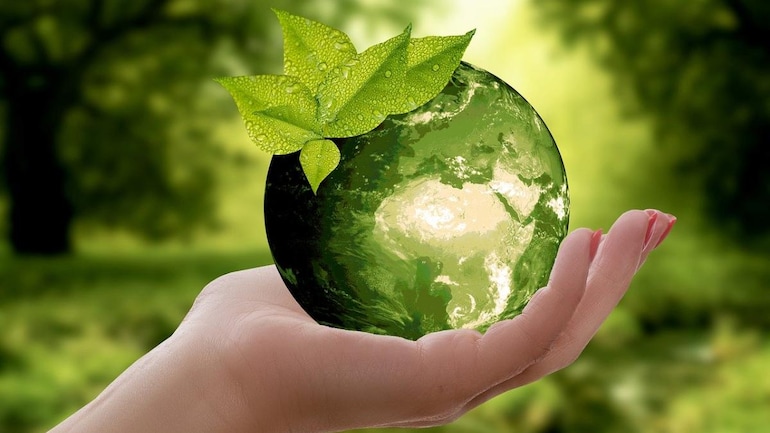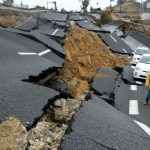Natural resources are those resources that occur within the environment in their original and natural form, undisturbed by humanity. They take years to form without the intervention of humans. The Mother Earth is abundant with natural resources that develop on this planet using its surrounding environment. These natural resources are derived from the environment. While few of them are used for our survival like water, air, rest of them like coal, gas, oil are used for satisfying our daily needs. From forests to mountains to minerals to coastal shores and wetlands, each of these natural resource has its own importance.
One of the issues that comes up when trying to discuss ways of practicing energy conservation is that many people aren’t even aware of what the top 10 natural resources are that they are trying to conserve. Just about everyone can name coal, gas and oil – but what about the other 7?
“Natural resources are resources that exist without actions of humankind. This includes all valued characteristics such as magnetic, gravitational, and electrical properties and forces. On earth it includes: sunlight, atmosphere, water, land along with all vegetation and animal life that naturally subsists upon or within the heretofore identified characteristics and substances.”

With the world’s population fast approaching almost 8 billion the issue becomes one of resource management as well. It is one thing to practice conservation, but as the population grows – so too does the demand. Another problem is that as 3rd world countries continue to progress in industrialization, their need for resources is going to increase. It isn’t just that you can plan for an increase in need according to an increase of percentage of use per billion persons, as societies grow and become more modernized their reasonable use of natural resources also increases in proportion to people and industry.
Top 10 Natural Resources in the World
Here are the top 10 natural resources in the world, how they are already in danger from the current demands placed on them; and how conservationism can help to manage these resources so they don’t disappear. Using alternate resources is one thing that will help; creating better resource management plans is what will also help to preserve these resources for the future.
1. Water
While the earth may be mostly water, only about 2-1/2 percent of it is fresh water. Of that 2.5%, even less is considered to be potable. Potable water is water that is considered to be safe to drink and cook with. While many countries are working to build water treatment plants, the fact is that due to changes in the climate the amount of rain and ice melts from winter have dropped off and lowered the reserve supplies of freshwater to be treated. There are initiatives to educate and regulate the use of water in the world, as well as exploration into the technology of water farming in arid countries too.
2. Air
Clean air is necessary for the existence of life on this planet. It is essential for the existence of plants, animals and wildlife. It is important to reduce air pollution as polluted air degrades the environment and can enter our body and can cause health related problems. There are number of ways to keep the air clean and reduce air pollution like riding bus instead of using your own vehicle, carpooling etc. Read here more about causes and effects of air pollution.
3. Coal
Coal is estimated to be able to last less than 200 more years. One of the issues is that as countries such as China increase their demands on the coal supply it will dwindle faster. Coal is also the major source of air pollutant in the world so there is much discussion about regulating its usage. The problem is it is one of the cheapest sources of fuel for industrial applications.
4. Oil
The general estimate is that with the projected rate of consumption of oil supplies and known resources that there is enough to last for 30-40 more years. While many in the oil industry are pushing to be allowed to frack and drill in protected areas to look for undiscovered oil fields, little has been done to address the question of what will happen to the Earth’s crust when the fields are empty and there are large empty cavities beneath the Earth. Even if new fields and methods of oil extraction are discovered, geologists project that it would be impossible for the Earth to have an unlimited supply of oil. It takes millions of years for oil to be created; there is no way of speeding up that process.
5. Natural gas
Natural gas reserves are doing only slightly better than oil, it is estimated that there is enough to last for 60 years. Gas is a much cleaner fuel source than oil, which has led to an increased level of consumption of it as an alternative fuel, but it still stands to run out quickly.
6. Phosphorus
Phosphorus comes from phosphate rock and is used to grow all of our food and crops. Unfortunately, phosphate rock is only found in three places on Earth – the US, China and Morocco. The projected lifespan of the current known resources is about a 100 years. There has not been significant research in developing new and safe fertilizers that can be effective replacements for phosphorus.

7. Other Minerals
Other minerals like gypsum, bauxite, phosphate, bentonite, mica, titanium, zirconium are found in sea beds along the coastal plains. Rare earth elements like scandium and terbium are two of the earth powerful minerals that are used in wind turbines and electronic circuits in smartphones. Coastal plains contains deposits of potassium carbonate and rare elements like cerium and neodymium.
8. Iron
Iron is also in limited supply. It is made from elements such as silica which then have to be heated to create the pig iron that industrialization depends on. Iron was the most important natural resource on earth during ancient ages. It allowed people at that time to build stronger weapons, better transportation and taller buildings. Both iron and steel are still used in modern day industries.
9. Soil
Another important natural resource is soil. Soil is composed of many different particles and nutrients in the soil helps plants grow. Apart from this, soil can also be used to provide shelter. A pile of garbage along with some soil when placed in worm compost bin, creates nutrient rich soil that helps in growth of plants and makes them healthy.
10. Forests and Timber
As the world gets more modern and population grows, there is more of a demand for housing and construction projects. This reduces open green spaces. Forests are necessary to preserve the ecology of the world that supports all of the natural resources and life. Forests also play a critical role in providing clean air and the lumber that builds the homes.
Apart from the ones listed above, rocks and sediments, rivers and lakes, mountains, farmland, wetlands, coastal shores, clays, sand, copper, manganese and stone are some of the other natural resources.


